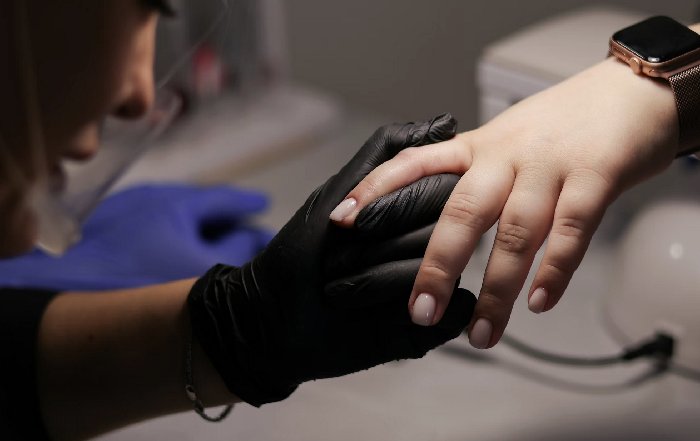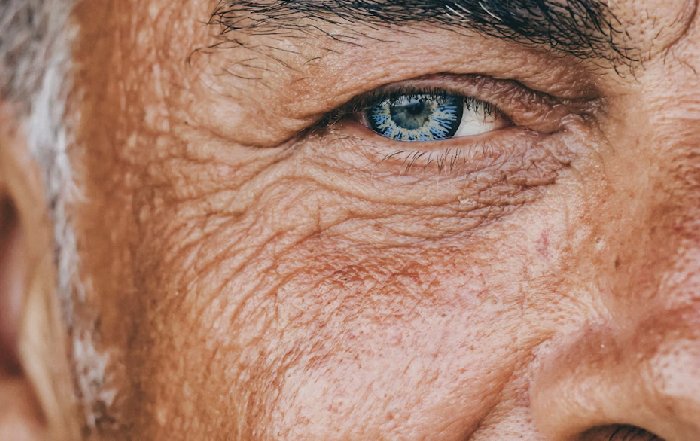How Beauty Brands Deepen Consumer Trust
The Maturing Trust Economy of Global Beauty
By 2026, the global beauty industry has fully transitioned into a sophisticated trust economy, in which consumers in North America, Europe, Asia, Africa and South America evaluate brands through a multidimensional lens that goes far beyond surface-level claims about glow, coverage or texture. They now scrutinize integrity, scientific rigor, transparency, inclusivity, sustainability, data ethics and corporate behavior, and they do so with an unprecedented level of information at their fingertips. For a worldwide audience that turns to BeautyTipa as a reference point for insight on beauty, skincare, wellness and the business of personal care, understanding how this trust is constructed, maintained and sometimes lost has become a strategic necessity rather than a nice-to-have perspective.
In mature markets such as the United States, United Kingdom, Germany, France and Canada, consumers typically cross-check brand messaging against independent dermatological guidance, regulatory resources and peer-reviewed science, while in fast-growing markets including China, Brazil, South Korea, South Africa and across Southeast Asia, digital-native shoppers expect constant innovation and authenticity to be delivered at the same speed as social media trends. In this landscape, trust functions as the industry's core currency, influencing not only daily purchase decisions and repeat behavior, but also long-term brand equity, investor confidence, retail partnerships and the ability of companies to attract and retain top talent. On BeautyTipa, this reality is reflected in coverage that ties product conversations to broader analyses of reputation, governance and global market dynamics, helping readers interpret the signals that truly matter.
Transparency as the Primary Marker of Credibility
Transparency remains the foundational element of credibility, but in 2026 it has evolved from a narrow focus on ingredient lists into a broader expectation that brands will offer clear, verifiable information about formulation science, sourcing, testing, environmental impact and data practices. Established groups such as L'Oréal, Estée Lauder Companies and Unilever have been pushed by consumers, regulators and advocacy organizations to standardize disclosures, publish more detailed sustainability reports and clarify how they substantiate claims. Public resources from the U.S. Food and Drug Administration enable professionals and consumers to understand how cosmetics are regulated, and this official reference point has become a common benchmark against which marketing language is evaluated.
In Europe, the European Commission continues to refine the EU Cosmetics Regulation framework, reinforcing the region's position as a global safety reference for many consumers in the Netherlands, Sweden, Denmark, Italy and Spain, as well as in markets across Asia and Latin America that view European standards as a quality signal. Brands increasingly highlight their adherence to the EU Cosmetics Regulation framework as part of their trust narrative, and they recognize that any misalignment between regulatory reality and promotional messaging can quickly be exposed by informed audiences. For readers who rely on BeautyTipa and its dedicated skincare and guides and tips sections, the ability to interpret labels, certifications and compliance claims has become a key skill in navigating a crowded marketplace.
Scientific Evidence and the Institutionalization of Derm-Backed Beauty
Trust in beauty has become inseparable from scientific evidence, and in 2026 this expectation has only intensified. Consumers in Canada, Australia, Japan, Singapore, South Korea and the wider European Union increasingly seek products whose benefits are supported by clinical testing, measurable outcomes and expert endorsement, rather than aspirational language or purely anecdotal testimonials. Professional organizations such as the American Academy of Dermatology continue to provide accessible education that helps users evaluate skincare ingredients and treatments, and brands that align their positioning with such medically grounded guidance tend to be perceived as more reliable and responsible.
The proliferation of dermatologist-founded and derm-backed lines has shifted competition toward evidence-based differentiation, with many companies investing in controlled trials, in vitro research and long-term tolerability studies. Platforms like PubMed allow practitioners, formulators and informed consumers to access scientific literature on cosmetic ingredients, making it more difficult for any player to rely on vague or exaggerated claims without risk of being challenged. On BeautyTipa, editorial coverage and analysis within routines and technology and beauty increasingly emphasize the difference between marketing descriptors and clinically substantiated performance, helping readers in the United States, Europe, Asia and beyond integrate products into their daily lives with a more critical, evidence-led mindset.
Ingredient Literacy, Ethical Formulation and the Demand for Clarity
Ingredient literacy has become mainstream, and this shift has fundamentally altered how trust is formed. From retinoids, vitamin C derivatives and peptides to microbiome-focused actives, biotech-fermented compounds and advanced UV filters, consumers now expect brands to explain not only what is present in a formula, but also why it has been chosen, how it interacts with skin or hair over time and what trade-offs may exist between efficacy and tolerance. Independent organizations such as the Environmental Working Group have contributed to this awareness by enabling users to assess cosmetic ingredient safety, and even in regions where methodology debates persist, the broader effect has been to encourage more questioning and more research.
The Cosmetic Ingredient Review panel continues to publish independent safety assessments that brands, professionals and media outlets can reference when addressing controversial substances, which is particularly relevant in markets like Germany, Switzerland, Norway and the Netherlands where expectations around safety and disclosure are especially high. For BeautyTipa readers exploring new launches and category leaders in the brands and products vertical, this context helps distinguish between formulas built on genuinely thoughtful, long-term strategies and those that rely on buzzwords or "free from" lists without a coherent scientific rationale. As ingredient communication becomes more sophisticated, trust is increasingly earned by companies that can translate complex chemistry into accessible, accurate narratives without oversimplifying or sensationalizing.
Sustainability, Circularity and Responsible Sourcing as Core Trust Drivers
Environmental responsibility has moved from a supporting message to a central trust driver, especially in markets such as the United Kingdom, France, the Netherlands, Finland, Sweden, New Zealand and parts of North America where consumers routinely evaluate brands through the lens of climate impact, biodiversity and resource use. Organizations like the Ellen MacArthur Foundation continue to promote the circular economy and encourage companies to rethink packaging and resource use, and in 2026 many leading beauty players are experimenting with refill systems, mono-material packaging, advanced recycling partnerships and low-carbon logistics as visible demonstrations of their commitments.
Responsible sourcing remains equally critical, particularly for ingredients such as palm oil, mica and certain botanical extracts that carry complex environmental and social implications. The Roundtable on Sustainable Palm Oil provides frameworks and certification pathways for sustainably produced palm oil, and its standards influence procurement strategies across Europe, Asia, North America and emerging African markets where deforestation and land-use concerns are increasingly salient. On BeautyTipa, sustainability is examined not only from a consumer standpoint but also within the business and finance section, which connects eco-design, carbon reporting and ethical sourcing to capital flows and risk management, drawing on resources such as the UN Environment Programme for readers who want to learn more about sustainable business practices.
🌟 The 8 Pillars of Beauty Brand Trust in 2026
Explore how global beauty brands build and maintain consumer trust
Transparency
Clear disclosure of ingredients, sourcing, and testing practices
Scientific Evidence
Clinical testing and expert-backed formulations
Ingredient Literacy
Education on formulation choices and safety
Sustainability
Environmental responsibility and circular economy practices
Diversity & Inclusion
Cultural intelligence and representation across markets
Digital Trust
Social proof and transparent influencer partnerships
Technology & Data
Personalization balanced with privacy protection
Governance & Ethics
ESG metrics and corporate accountability
🔍Transparency
Transparency has evolved beyond ingredient lists to encompass comprehensive disclosure of formulation science, sourcing practices, testing methods, environmental impact, and data handling.
🧪Scientific Evidence
Consumer trust is increasingly inseparable from scientific validation. Audiences seek products with benefits supported by clinical testing, measurable outcomes, and expert endorsement rather than aspirational claims.
🌿Ingredient Literacy
Mainstream ingredient literacy has fundamentally altered trust formation. Consumers expect brands to explain not only what's in a formula, but why it was chosen and how it interacts with skin or hair over time.
♻️Sustainability
Environmental responsibility has become a central trust driver. Consumers evaluate brands through the lens of climate impact, biodiversity, resource use, and circular economy principles.
🌍Diversity & Inclusion
In a global industry serving diverse audiences, trust is closely tied to genuine cultural intelligence across product development, visual storytelling, and corporate leadership.
📱Digital Trust
Digital ecosystems shape how trust is formed and challenged through algorithms, social proof, and community-driven platforms. Real-time feedback can rapidly transform reputations.
🤖Technology & Data
Technology enhances personalization and transparency while raising questions about privacy, bias, and data security. AI-powered diagnostics and connected devices enable tailored experiences when implemented responsibly.
🏛️Governance & Ethics
Trust is heavily influenced by governance structures, ethical standards, and financial discipline. Investors and partners increasingly use ESG metrics as indicators of risk management and long-term viability.
Diversity, Inclusion and Cultural Intelligence as Non-Negotiables
In a global industry that serves audiences from South Korea, Japan and China to Brazil, South Africa, the United States and the broader Middle East and North Africa region, diversity and inclusion have shifted from aspirational goals to non-negotiable expectations. Trust is now closely tied to whether a brand demonstrates genuine cultural intelligence across product development, visual storytelling and corporate leadership. Organizations such as the British Beauty Council continue to advocate for a more inclusive beauty landscape, highlighting the economic upside of catering to diverse skin tones, hair textures, age groups, genders and cultural traditions, and also emphasizing the reputational risk of failing to do so.
In 2026, missteps in representation or culturally insensitive campaigns are rapidly amplified and dissected on global platforms, particularly in the United States, United Kingdom, France, Brazil and South Africa where public discourse on identity and equity is highly active. Brands that invest in diverse leadership pipelines, community partnerships, region-specific product adaptation and localized storytelling tend to foster deeper, more resilient trust, especially in markets like India, Nigeria, Mexico and Indonesia where local beauty norms are rich and distinct. For BeautyTipa, which serves readers across continents and covers makeup, fashion and international developments, this emphasis on representation is not treated as a separate topic but as a thread that runs through coverage of trends, product reviews and business analysis, reflecting the reality that inclusive design and respectful communication are now central to brand strength.
Digital Ecosystems, Social Proof and Algorithmic Visibility
The digital ecosystem continues to shape how trust is formed and challenged, but by 2026 the dynamics have become more complex as algorithms, short-form video and community-driven platforms influence what consumers see and believe. Shoppers across the United States, United Kingdom, Germany, Canada, Australia, Singapore, Malaysia and Thailand often begin their discovery journey on social media or search engines, where user-generated reviews, expert content and creator recommendations serve as a first filter before any visit to a physical store or brand website. Research from consultancies such as McKinsey & Company shows how online advocacy and peer recommendations can significantly shift category share, especially among Gen Z and younger millennials in markets like South Korea, Brazil and Mexico.
Real-time social proof on platforms such as TikTok, Instagram, YouTube, WeChat and emerging regional apps can rapidly transform a niche product into a global bestseller or, conversely, expose issues with performance, pricing or ethics within hours of a launch. Brands that respond quickly, transparently and constructively to questions and criticism tend to maintain or even strengthen trust, whereas those that ignore feedback or resort to defensive messaging risk compounding reputational damage. In this environment, BeautyTipa positions itself as a curated, analytical counterpart to the fast-moving social feed, using its trends and events coverage to connect viral moments to longer-term shifts in consumer behavior, technology and regulation, and to help readers distinguish between short-lived hype and genuinely meaningful innovation.
Influencers, Experts and the Evolution of Partnership Models
Influencer marketing remains a central feature of the beauty landscape, but in 2026 the criteria for influence have evolved. Audiences in the United States, Canada, the United Kingdom, Germany, France, the Nordics and across Asia-Pacific increasingly look for creators who combine authenticity with expertise, who disclose partnerships transparently and who maintain a consistent value framework even as they collaborate with multiple brands. Regulatory bodies such as the U.S. Federal Trade Commission and the UK Competition and Markets Authority continue to refine guidelines on disclosure standards for endorsements, and visible compliance with these rules has become part of how brands and creators signal respect for their communities.
As a result, many companies now prioritize long-term, multi-year partnerships with dermatologists, makeup artists, hair professionals, nutritionists and wellness experts who can integrate products into educational content, rather than one-off sponsored posts. This approach resonates especially well in markets like Switzerland, Singapore, Japan and the Netherlands, where audiences traditionally value technical knowledge and measured communication. For the BeautyTipa community, which spans beauty enthusiasts, professionals and entrepreneurs and engages with content across health and fitness and food and nutrition as well as beauty, this shift underscores the importance of following voices that combine professional training, transparent collaboration and a clear point of view on ethics and sustainability.
Technology, Data and the New Frontier of Personalized Beauty
Technology has become a double-edged driver of trust, capable of enhancing personalization and transparency while also raising questions about privacy, bias and data security. AI-powered diagnostics, smartphone-based skin imaging, connected devices and augmented reality try-on tools now enable brands to offer tailored routines and shade matching to consumers in Japan, South Korea, China, the United States, the United Kingdom, Germany, South Africa and beyond. Publications such as MIT Technology Review regularly examine how AI is reshaping consumer industries, and beauty is frequently cited as a sector in which algorithmic recommendations can significantly improve customer satisfaction when implemented responsibly.
At the same time, regulators in the European Union, United States, United Kingdom and other jurisdictions continue to tighten rules around data collection, biometric information and automated decision-making, with frameworks such as the EU's General Data Protection Regulation and emerging AI-specific legislation setting boundaries for what is acceptable. Trustworthy brands now explain clearly which data they collect, how long they store it, who can access it and how it is anonymized or aggregated, and they offer meaningful options for consent and control. On BeautyTipa, coverage within technology and beauty explores not only the capabilities of new diagnostic tools and recommendation engines, but also the ethical, regulatory and cultural questions that accompany them, helping readers in Europe, Asia, Africa, North America and South America understand how to benefit from personalization without compromising autonomy or privacy.
Holistic Wellness and the Convergence of Beauty, Health and Lifestyle
The convergence of beauty, wellness and health has accelerated, and by 2026 consumers across Italy, Spain, France, the United States, Canada, Australia, South Korea, Japan, Brazil and New Zealand increasingly view their routines through a holistic lens that integrates mental well-being, sleep quality, movement, nutrition and stress management. Organizations such as the World Health Organization highlight the importance of holistic health, and this broader definition of well-being has influenced everything from product innovation to retail experiences and content strategies.
The growth of ingestible beauty, microbiome-focused supplements, adaptogen-infused skincare, mood-supporting fragrances and fitness-aligned bodycare has created new opportunities and new responsibilities for brands and retailers. Those that ground their offerings in credible science, realistic expectations and responsible claims tend to earn more trust than those that blur the line between cosmetics and therapeutics without sufficient evidence. BeautyTipa reflects this integrated perspective by connecting wellness, health and fitness and traditional beauty coverage, enabling readers from the United Kingdom to Singapore and from South Africa to Scandinavia to design routines that support long-term resilience rather than short-term fixes.
Governance, Ethics and the Financial Dimension of Trust
Behind the visible aspects of product and marketing, trust is heavily influenced by governance structures, ethical standards and financial discipline. Investors, analysts and corporate partners increasingly use environmental, social and governance (ESG) metrics as indicators of risk management and long-term viability, and organizations such as the World Economic Forum continue to emphasize sustainability and stakeholder capitalism as central themes for consumer industries. In financial centers such as London, New York, Zurich, Frankfurt, Paris, Singapore and Hong Kong, institutional investors scrutinize how beauty companies handle supply chain oversight, labor conditions, climate-related disclosures and responsible marketing.
For entrepreneurs, executives and professionals who turn to BeautyTipa for insight into business and finance, understanding these governance dynamics is crucial for evaluating which brands are likely to sustain consumer trust and shareholder value over time. Transparent reporting, independent audits, robust whistleblower mechanisms, clear codes of conduct and strong board-level oversight of sustainability and ethics all contribute to an environment in which missteps are less frequent and more swiftly addressed. As regulatory regimes in Europe, North America and parts of Asia tighten requirements for climate and human rights reporting, the gap between companies that treat ESG as a branding exercise and those that integrate it into core strategy is becoming more visible to both markets and consumers.
Talent, Culture and the Role of the Employer Brand
Trust is not solely an external concept; it also shapes how beauty companies attract, retain and motivate talent across research, marketing, retail, technology and operations. Professionals in the United States, Germany, the United Kingdom, Singapore, South Africa, the Nordics and elsewhere increasingly evaluate potential employers on values, culture, flexibility, learning opportunities and social impact. Platforms such as LinkedIn and research from firms like Deloitte provide insight into evolving workforce expectations, and they make employer reputation more transparent to current and prospective employees.
Organizations that foster inclusive cultures, invest in continuous education, support ethical decision-making and encourage internal challenge and debate are often better equipped to deliver authentic external communication and consistent customer experiences. For BeautyTipa, which addresses career questions and industry dynamics within its jobs and employment coverage, this connection between internal culture and external trust is a recurring theme. Readers considering roles in product development in Paris, marketing in New York, digital strategy in Singapore or retail leadership in Johannesburg are increasingly aware that the strength of an employer brand can influence not only their own career trajectory but also the credibility of the products and services they help bring to market.
Globalization, Localization and Cross-Cultural Trust Building
As beauty becomes more interconnected, brands must navigate a delicate balance between global consistency and local relevance. Consumers in China, Japan, Thailand and South Korea often prioritize advanced technology, sensorial textures, brightening and pollution-defense benefits, while audiences in France, Italy and Spain may place greater emphasis on heritage, craftsmanship, fragrance and artistry. Markets in Africa and South America bring additional layers of climate conditions, hair and skin diversity, economic realities and cultural traditions that require nuanced adaptation of formulas, messaging and pricing strategies.
Market intelligence providers such as Euromonitor International offer data and analysis to help companies understand beauty and personal care trends across regions, but trust ultimately depends on how well brands listen to local consumers and collaborate with local experts rather than imposing a one-size-fits-all approach. BeautyTipa, with its global readership and international focus, interprets these cross-cultural dynamics for an audience that spans the United States, the United Kingdom, Germany, Canada, Australia, France, Italy, Spain, the Netherlands, Switzerland, China, Sweden, Norway, Singapore, Denmark, South Korea, Japan, Thailand, Finland, South Africa, Brazil, Malaysia and New Zealand. By highlighting both regional nuances and shared expectations around transparency, safety and respect, the platform helps readers understand how trust is built differently in each context yet anchored in universal principles.
How BeautyTipa Curates, Interprets and Extends Trust
Within this intricate ecosystem, BeautyTipa operates as a bridge between consumers, professionals, creators and brands, curating information and perspectives that allow its community to make more informed, confident decisions. Through its interconnected coverage of trends, guides and tips, brands and products, wellness, fashion, technology and business, the platform positions itself as more than a product discovery destination; it functions as a context provider that links individual routines to broader shifts in science, culture and regulation.
For the skincare enthusiast in New York or London refining a nightly routine, the entrepreneur in Singapore or Berlin evaluating category opportunities, the beauty professional in Toronto or Sydney assessing potential employers, or the creator in São Paulo or Johannesburg building a community around honest reviews, BeautyTipa aims to offer depth without losing clarity. By consistently connecting performance claims to evidence, marketing to governance, sustainability initiatives to measurable outcomes and social narratives to lived experiences, the platform encourages its audience to approach beauty as part of a larger life and business ecosystem. The broader BeautyTipa environment at beautytipa.com integrates content across beauty, wellness, fashion, technology and finance, reflecting the reality that in 2026, trust in beauty is multi-layered and extends far beyond the bathroom shelf.
As new technologies emerge, regulatory frameworks tighten, social expectations evolve and global markets continue to diversify, the central questions for consumers and professionals remain remarkably consistent: Is this brand transparent and accountable? Are its claims grounded in credible science? Does it act inclusively and respectfully across cultures and communities? Does it protect the people and environments it touches, both online and offline? In helping its readers examine these questions and apply them to daily choices, BeautyTipa contributes to a more informed, resilient and ethically grounded beauty community worldwide, one in which trust is earned through sustained action rather than assumed through heritage or advertising alone.








